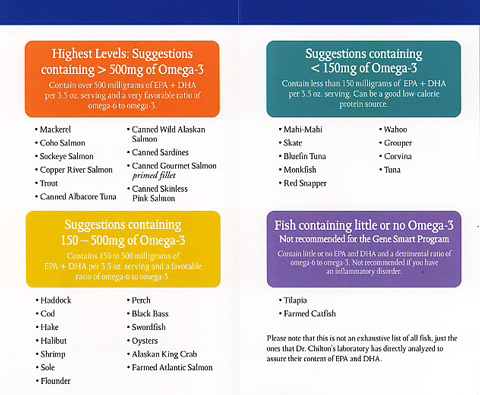Ever since coming to New Zealand on vacation for five weeks on February 23, I have been eating a lot of the country’s wonderful fish and seafood. Everything from the well-known salmon, prawns, shrimp, oysters, and calamari to butterfish, groper, smooth dory, gurnard, ling, monkfish, and blue cod and on to fish I never heard of before — hoki, moki, warehou, tarakihi, whitebait, bluenose, trumpeter, and green shell mussels. We have a greater variety of fish and any other source of omega-3 fats, and they all taste wonderful to me.
Because of my steady diet of New Zealand fish this month, my omega-3 level is certainly improving, something important to everyone and crucial to those of us who have diabetes. But according to the results of the LipidLab test that CEO Doug Bibus just sent me, my results were already good enough.
“Wow!” he emailed me. “What a pleasure it was to interpret your chromatogram and data. You truly are the omega 3 man!!! You are close to Dr. Ralph Holman’s omega 3 levels. He has a 25% total omega 3 and a 1:1 omega 6 to omega 3 ratio. He just celebrated his 92 birthday!”
And I am only 74.
Doug went on: “Would you mind if we used your profile as an example on our website as a true success story? Are you taking any fish oil supplements or getting most of your omega 3 from your diet (fish). You have a big level of ALA which comments on your intake of flax and greens.”
I replied to Doug, “You are certainly welcomed to use my profile on your site. I don’t take any fish oil — but I do take three capsules of Neptune Krill Oil (the NOW brand), 500 mg each, daily. I eat a lot of cold-water fish, mainly salmon (fresh, frozen, and canned) and also a very high quality sardine (from vitalchoice.com ). Sometimes other fish, including the best tasting one, Chilean sea bass (formerly Patagonian toothfish, and I don’t wonder why they changed the name).
“I use flaxseed oil on my salad, which is my usual lunch (when I am at home). My breakfast, both at home and here in New Zealand is Greens First , which I have written about at Health Central. Interesting that you have my ALA results. But it’s not just omega-3. I think the key at least at the start is to reduce the omega-6.”
My LipidLab report is comprehensive and too long to include here. But I just uploaded it to my website at http://www.mendosa.com/test.pdf
Now, I am hard at work to equal Dr. Holman’s omega-3 level and eventually to match his age.
P.S: I originally wrote this article for HealthCentral.com on March 05, 2010. I am now back in the U.S. after vacationing in New Zealand. You can read about the trip here: http://www.mendosa.com/fitnessblog/?cat=17
This article is based on an earlier version of my article published by HealthCentral.

